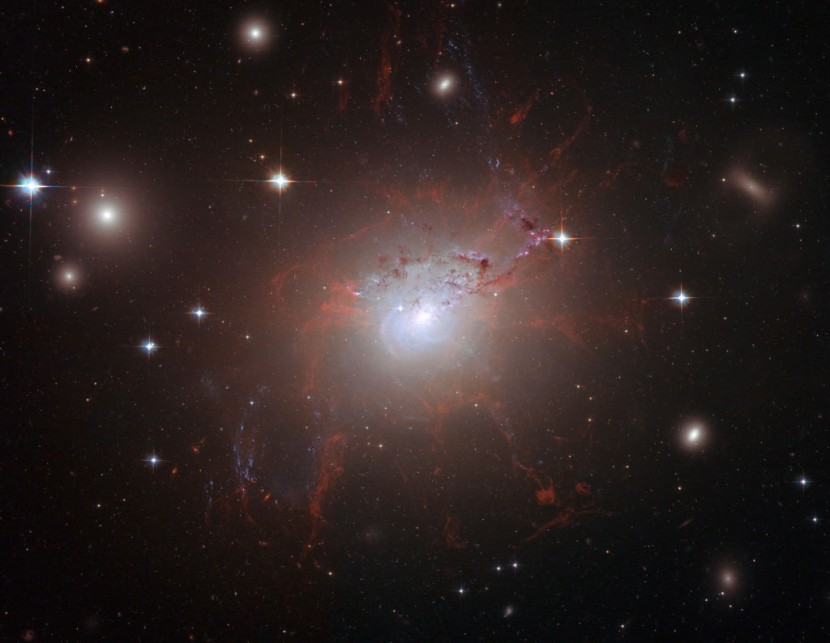
NASA's new and powerful Hubble Space Telescope has recently finished its calibration and testing phase and has now captured an image that shows a 'curious pair' of galaxies that might be hiding a huge secret.
The cosmic duo, known as IC 4271 or by its other name, Arp 40, is a pair of spiral galaxies that are located roughly 800 million light-years away from our planet. Among the two, the smaller galaxy is superimposed on the larger one, which is a type of active galaxy that is called a Seyfert galaxy.
Curios Pair of Galaxies
These types of galaxies are named after astronomer Carl K. Seyfert who, in 1943, published a paper about spiral galaxies with very bright emission lines. In modern times, experts know that roughly 10% of all galaxies in the vast universe could be Seyfert galaxies.
Also known as Arp 40, the galaxy pair IC 4271 dazzles in this newly released #GalaxiesGalore image!
— Hubble (@NASAHubble) May 20, 2022
This duo is located about 800 million light-years away from us.
Find out more: https://t.co/y3fqSxUQ9t pic.twitter.com/Yx2xfXgzc6
Seyfert galaxies belong to the class of "active galaxies," which is a term for objects that have supermassive black holes at their centers accreting material, which releases vast amounts of radiation. Furthermore, the active cores of Seyfert galaxies are at their brightest when observed in a light outside of the visible spectrum, as per NASA.
The larger galaxy among the newly photographed pair is a Type II Seyfert galaxy, which means that it is a very bright source of infrared and visible light. The new image uses data collected during Hubble's observations in the vast cosmos that were designed to study the role of dust in shaping the energy distributions of low mass disk galaxies.
Read Also: Discovery of Extraterrestrial Hypatia Stone in Egypt Reveals Signs It Came From a Supernova Event
The Hubble Space Telescope's observations looked at six pairs of galaxies wherein one was in front of the other. The broad range of light that the Hubble's Wide Field Camera 3 is sensitive to, along with its resolution, has given researchers the opportunity to map the foreground galaxy's dust disk in incredibly fine detail across ultra-violet, visible, and infrared light.
According to Sci-News, the colors in the captured photograph were primarily visible light while the color violet represented ultraviolet light, and red represented near-infrared light.
Hubble's Space Achievements
The situation also comes after NASA was able to capture haunting audio from a black hole that allows humans to perceive its sounds from 240 million light-years away. The audio, which was released on May 4, was taken from a black hole located at the center of the Perseus galaxy cluster, which is a massive space structure located roughly 11 million light-years from Earth.
Astronomers involved in the momentous occasion created the audible sound by recording the pressure waves that the black hole sent through the cluster's hot gas. In their original form, these waves are not audible to the human ear, which required scientists to extract the sound waves and scale them up by 57 and 58 octaves.
In a release, the space agency said that in some ways, the sonification of the waves was unlike anything they have done before. NASA said that the sound waves were being heard around 144 quadrillion and 288 quadrillion times higher than their original frequency, CBS News reported.
Related Article:
© 2025 HNGN, All rights reserved. Do not reproduce without permission.








